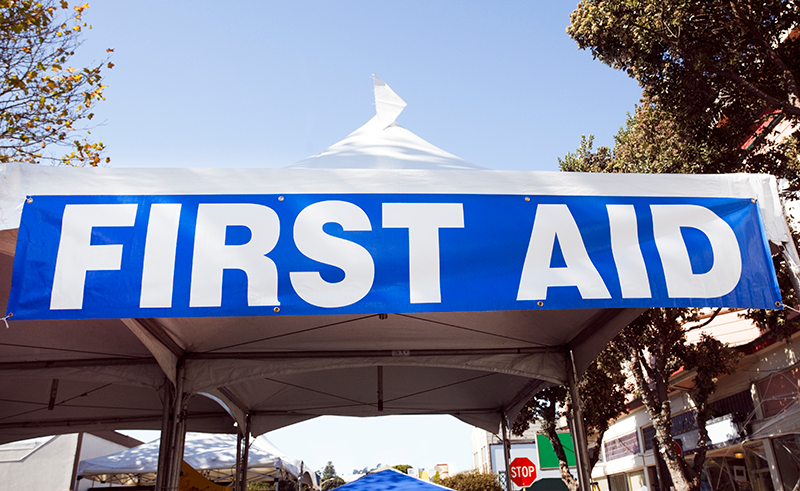The importance of amusement park first aid
According to a Consumer Product Safety Commission report, more than 43,000 people in the United States seek treatment for ailments while at an amusement park each year. Of those injuries, the vast majority are inflicted on people under 24. Fortunately, most of these injuries are minor.
Amusement park first aid stations report that the most common reasons for guest visits are headaches and overheating. Other common ailments include dehydration, nausea, and cuts and bruises.
Amusement parks are obligated by law for duty of care. In a nutshell, duty of care means that theme parks must do everything in their power to protect their customers from harm. When parks fail to meet their duty of care, they may be liable for negligence.
Duty of care includes:
- Risk assessment, prevention, and communication systems
- Maintaining safe conditions for guests
- Promptly addressing threats to visitor safety
- Alert systems to communicate with visitors regarding dangerous weather or other safety concerns
First aid is a fundamental component of duty of care that theme parks use to keep their guests healthy and safe. First aid stations provide relief for minor health issues but also offer refuge for their guests, a place where visitors can go to feel safe. Ultimately, knowing that help is readily available contributes to the overall enjoyment of park guests.
This post will examine some of the best practices in amusement park first aid and review examples from parks across the country.
Also read: Best Practices for Incident Prevention in Amusement and Entertainment
First aid station amenities and provisions
Larger parks have the upper hand in creating cohesive first aid stations. Disney parks, for example, have Registered Nurses on duty, provide private rooms for some of the patients, and are even equipped with IVs. But smaller parks can certainly get ideas from the larger parks that are easily implemented on a budget. For example, Disney trains all performers in basic first aid and equips them with walkie-talkies to radio for help, should the need arise. Legoland also makes sure their security guards are trained in first aid as well.
Many CPR certification courses also provide training for the use of automated external defibrillators (AEDs), which parks should consider having available. In the event of a cardiac arrest, these easy-to-use medical devices can save lives while waiting for an ambulance to arrive.
In addition, parks need to keep first aid relevant to their specific attractions. For example, at the San Diego Zoo, the first aid station is equipped with site-specific testing, such as tuberculosis and other diseases that sometimes make the leap from animal to human. Read more about risk management considerations for zoos here.
Easily implementable ideas include:
- Providing storage and refrigeration for guests’ medications. (Parks will want to consult state law on this. Some states, like Indiana, prohibit public venues from storing medication.)
- Supplying plenty of seating and rest areas
- Staffing nurses and other emergency medical professionals
- Having AEDs onsite for emergency personnel’s use
- Creating multiple first aid stations at strategic high-traffic areas of the park
Beyond these ideas, all parks should implement several common-sense measures:
- Clearly mark first aid stations on park maps
- Have a dedicated emergency line
- Provide guidance on first aid precautions for guests to take (see below)
Learn more: Slip, Trip, and Fall Claims
Safety precautions for guests to take
Parks should provide guidance to their guests on first aid and make this guidance easily accessible on their website, social media, and other marketing channels. In addition, guests can significantly improve their experience by taking a few prudent steps to help prepare for their trip.
Safety tips for guests can include:
- Know the location of all first aid stations. They should be prominently marked on the park map.
- Pack a small bag with a first aid kit included. The kit should consist of sunscreen, bug repellent, and over-the-counter medicines for pain and nausea.
- Pack healthy snacks and a water bottle to maintain blood sugar and hydration, which are both common causes of illness.
- Respect park rules, and avoid horseplay. Rules, such as height requirements, are in place to protect guests from harm. It may be a cliche, but it is actually very important to keep your head and limbs inside ride cars at all times
- Familiarize yourself with park emergency procedures, alert systems, and telephone hotlines
- Tell park staff about potential hazards or suspicious individuals
Providing first aid guidance for guests helps deepen their enjoyment and get the most out of their visits.
Also read: Water Park Injuries: Risks & Liabilities
When injuries slip through the cracks
Despite the best intentions of park owners and staff, accidents do happen. Though very rare, incidents at amusements parks can even be deadly. As a result, some states require individual rides to carry separate insurance policies.
McGowan Allied provides expert guidance for its clients. Drawing on 35 years of experience covering the amusement industry, McGowan helps theme parks and other amusements navigate numerous risks, including injuries to guests, property damage, active shooters, and extreme weather.
Contact McGowan Allied to ensure your coverage is comprehensive and right for you.
